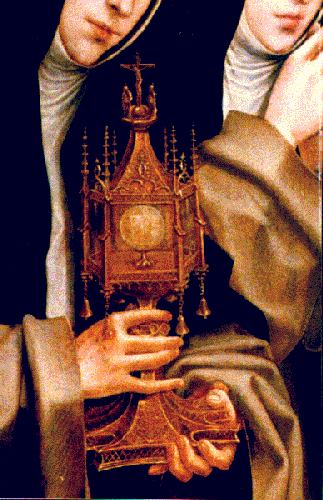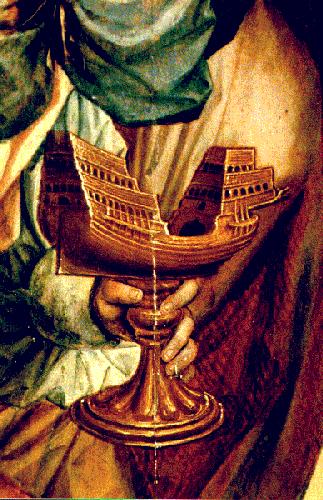16th-century Liturgical Goldsmithery: Details from the Setúbal Altarpiece, Jorge Afonso's workshop, 1520-1530 AD |


King Manuel’s court was magnificent, favouring the taste for the sumptuous. Jewellery was fundamental in this art of adornment. From the end of the 15th century, goldsmiths in the towns had been creating religious pieces as well as personal jewellery. The religious goldwork combined the Gothic tradition, with strong architectural elements (as in the hexagonal Ostensorium used for the purpose of keeping the Host from the panel with the Angel appearing to Saints Claire, Agnes and Collette), with new decorative elements inspired by the Age of Exploration and the Renaissance. The gold incense boat Naveta (from the Assumption panel) is an example of this expansionist mentality influencing art.
© 1998 Oxfordshire Museum Service, Setúbal Museums and the Benaki Museum